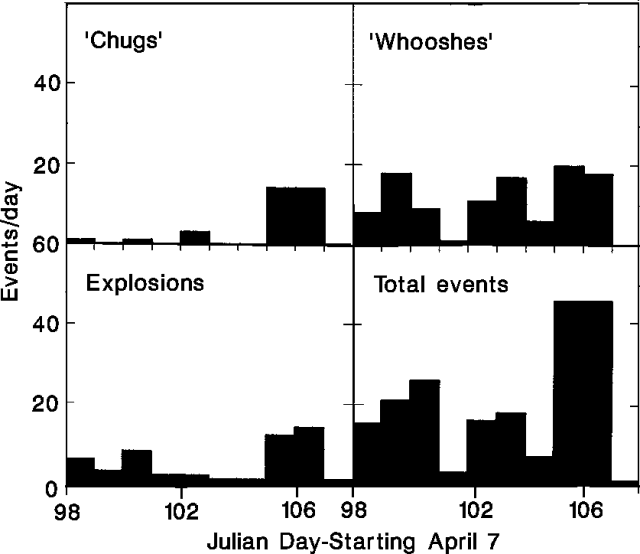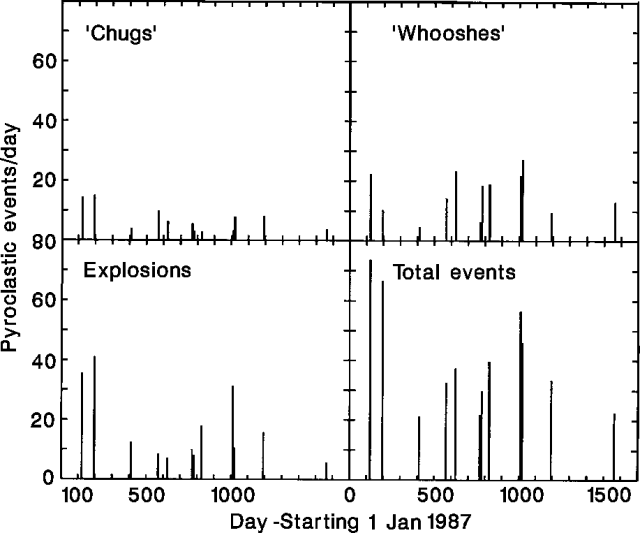Report on Arenal (Costa Rica) — April 1991
Bulletin of the Global Volcanism Network, vol. 16, no. 4 (April 1991)
Managing Editor: Lindsay McClelland.
Arenal (Costa Rica) Strombolian activity; explosions; lava extrusion
Please cite this report as:
Global Volcanism Program, 1991. Report on Arenal (Costa Rica) (McClelland, L., ed.). Bulletin of the Global Volcanism Network, 16:4. Smithsonian Institution. https://doi.org/10.5479/si.GVP.BGVN199104-345033
Arenal
Costa Rica
10.463°N, 84.703°W; summit elev. 1670 m
All times are local (unless otherwise noted)
Strombolian activity, with sporadic small explosions, lava extrusion, and voluminous gas emission, continued during April. Tremor, associated with lava extrusion, dominated seismicity during the first half of the month. Following 15 April, the number of explosions increased and tremor diminished.
The following is a report by W. Melson. "From 7 to 17 April, continuous 24 hour/day seismic, sound, and visual observations from the Arenal Observatory . . . revealed that; 1) blocky lava flows are moving down and have covered the S slope to about 900 m elevation. None are now active in the previous long-term channel on the N slopes into the Río Tabacón drainage; one small 200-m-long flow was active on the WNW slope. 2) The level of pyroclastic activity ranged from 3 events/day (10 April) to 46/day (14-15 April) (figure 37). 3) Episodic periods of intense harmonic tremor are common. Compared to 11 other periods of close monitoring, beginning in 1987, the pyroclastic activity is low (figure 38)."
Geological Summary. Conical Volcán Arenal is the youngest stratovolcano in Costa Rica and one of its most active. The 1670-m-high andesitic volcano towers above the eastern shores of Lake Arenal, which has been enlarged by a hydroelectric project. Arenal lies along a volcanic chain that has migrated to the NW from the late-Pleistocene Los Perdidos lava domes through the Pleistocene-to-Holocene Chato volcano, which contains a 500-m-wide, lake-filled summit crater. The earliest known eruptions of Arenal took place about 7000 years ago, and it was active concurrently with Cerro Chato until the activity of Chato ended about 3500 years ago. Growth of Arenal has been characterized by periodic major explosive eruptions at several-hundred-year intervals and periods of lava effusion that armor the cone. An eruptive period that began with a major explosive eruption in 1968 ended in December 2010; continuous explosive activity accompanied by slow lava effusion and the occasional emission of pyroclastic flows characterized the eruption from vents at the summit and on the upper western flank.
Information Contacts: W. Melson, SI; V. Barboza, E. Fernández, J. Barquero, and R. Sáenz, OVSICORI.



